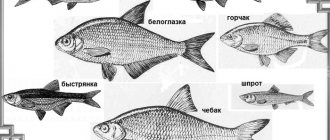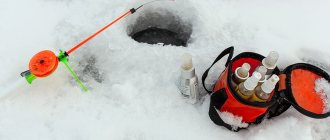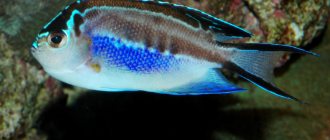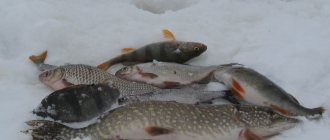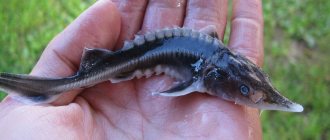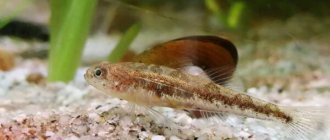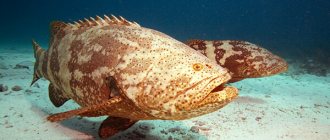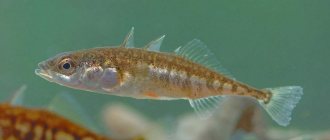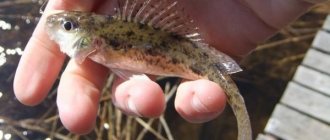Among the many carp-like loaches, the fish has its own characteristics. It lives in freshwater bodies of water where there are bottom accumulations of silt and thickets of mud. Its habitat is almost all of Europe with the exception of the Iberian Peninsula, Italy, Greece, Great Britain, Scandinavia, Crimea and the Caucasus. It also lives in many reservoirs of southern and eastern Asia. Many fishermen do not like this fish due to the fact that its long body, especially when moving, strongly resembles a snake. The loach, just like a small snake, is incredibly resourceful, it is almost impossible to hold it in your hands. But the fish is useful, interesting and even unique in its own way.
Characteristic external signs
The loach belongs to the loach family of the order Cyprinidae.
The loach family includes 177 different species of this fish, which are grouped into 26 genera.
The elongated body of the common loach has an almost cylindrical shape at the head, flattened on the sides, becoming increasingly flatter as it approaches the tail. Typically, adult fish reach 15-25 cm. Maximum body length is up to 30 cm. Average weight is about 50 g.
We also recommend reading:
Bleak fish: description of where buckle, sintya, and whitefish live List of fish: whitefish species muksun, omul and vendace Smelt fish: benefits and harms, habitat, preparation Who is whitefish?
The body is covered with small, sometimes almost invisible scales.
The head is small, slightly extended forward. Small yellow eyes are located almost on the frontal surface. The nostrils have the shape of thin elongated tubes. The mouth is turned downwards, like most other bottom-dwelling fish. Around the mouth there are 10 antennae of unequal length: on the upper jaw 4 are the shortest, 2 longer are located at the corners of the mouth, 4 more are on the lower jaw.
The fins are small, brown in color, and have rounded outlines, especially at the caudal fin. The dorsal and caudal fins are dotted with dark spots.
Feeding
Loach fish are voracious, and in their natural habitat they happily eat larvae, crustaceans, worms and vegetation. Squeakers especially love alien caviar, which the fish skillfully find in lakes thanks to their tactile antennae. At home, loaches are fed the following foods:
- bloodworm;
- meat;
- worms;
- tubifex;
- frozen and dry food.
If pets are kept with other fish, it is important that there is enough food, otherwise the loaches will take food away from weak and non-conflicting neighbors. Squeakers pick up food from the bottom, so floating species are not suitable for fish.
Interesting fact: loachfish can fast for up to 5 months without harm to their health.
Gallery: unusual loach fish (25 photos)
Reproduction
Reproduction of loach representatives usually occurs in summer or spring. The phenotype reaches sexual maturity at four years; during spawning, future parents are intensively fed in order to produce offspring. The female lays over 30 thousand brown eggs in algae or soil, which easily stick to the leaves. Six days later, tiny squeakers measuring 5 mm in size are born, which develop rapidly: after a year, the fry already reach 4 cm. Babies begin to search for food independently already in two weeks old.
Interesting fact: squeaks can remain without liquid for a long time, since they can breathe through gills, skin and intestines.
Loach fish are interesting representatives of the aquatic world, which differ in body shape, color and restless behavior. Squeakers are fascinating to watch, and their movements are smooth and graceful. However, pets, despite their similarity with snakes or eels, can not only diversify the appearance of the aquarium, but also benefit the owner by warning about possible weather changes.
Living in natural conditions
Unpretentiousness to living conditions in the natural environment is one of the unique properties that the loach fish has. In reservoirs, especially those that often dry out and are silted, where other fish species cannot survive, loaches manage to live without any damage to their health. For breathing, the loach, like all other fish, uses gills, but if necessary, it can breathe through the surface of the skin and with the help of the intestines. If the water in the reservoir is not sufficiently saturated with oxygen, the loach takes air from the atmosphere: it floats to the surface, captures the air with its mouth and passes it through the intestines. At the same time, a sound reminiscent of a squeak is heard. This is what explains the other name for the loach - squeak.
Keeping in an aquarium
The conditions for keeping and breeding loaches depend on the type of fish. Each species requires special attention and care, but there are general recommendations that will help you arrange your pets in an aquarium:
- To grow phenotypes, a spacious tank is purchased so that the fish can move freely without restrictions, and good filtration is also installed.
- The substrate is chosen to be fine in size, without sharp or rough edges, because pets love to bury themselves in the ground. It is better not to use sand.
- The optimal water temperature is 25–27C, lighting is set depending on the preferences of the fish species and vegetation.
- Plants and algae must be planted in the aquarium, decorations, shelters, snags and stumps must be placed so that timid pets feel comfortable.
Loach fish are often kept in a separate aquarium because the phenotype is timid and anxious. When a pet is stressed, it makes unpleasant sounds and squeaks, behaves restlessly, rushes around the pond and buries itself in the ground. However, if desired, pets can be placed with other species, for example, bots or catfish. The main thing is that the size of the reservoir allows it. Also, dense vegetation, shelters and grottoes must be planted in the species reservoir.
Interesting fact: squeakers have the unusual ability to predict the weather by sensing pressure changes. When a thunderstorm or natural disaster approaches, pets begin to constantly lean out of the aquarium, swallowing air and moving restlessly.
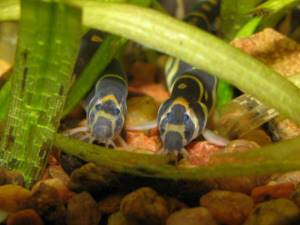
How to maintain?
Myers
Let's look at the basic rules that need to be taken into account to ensure proper maintenance of the fish. Thus, the loach, regardless of its variety, prefers an aquarium with a large bottom area. At the very beginning, we also pointed out that these funny underwater inhabitants prefer diffuse lighting. Their aquarium counterparts are no exception.
Required water parameters:
- temperature at 25-26 degrees;
- hardness from 4 to 10 degrees;
- pH – 5.5-7.2.
Aquarium acanthophthalmus prefer to eat tubifex and small bloodworms, but they do not refuse dry food. Moreover, among all the artificial options, the loach most likes special tablets that are intended for bottom fish.
Let's also touch on such an issue as compatibility. In the case of loaches, this is very important, since fairly large fish can eat them. Therefore, compatibility can be characterized as follows: the optimal neighbors will be small small fish.
Compatibility is one of the important components that affects the life expectancy of the fish in question. So, if the aquarist meets all the requirements for feeding, the aquarium, and takes into account compatibility, then the loach will live its full 5 years.
Return to content
Loach as bait for larger fish
The food for these nimble fish are small mollusks, bloodworms, crustaceans, insect larvae and even bottom vegetation. He retrieves it from the bottom and only before the onset of bad weather floats to the surface, swimming fussily and gasping for air. It is by this sign that fishermen accurately determine the upcoming worsening of the weather.
The loach reacts sensitively to changes in atmospheric pressure and, when bad weather approaches, begins to get very worried and poke its head out to the surface countless times. Loaches are a kind of natural barometer, and some lovers of beauty keep them in aquariums, where they adapt well.
Fishermen catch loach, which easily swallows a hook with bait (dung or earthworm), using fishing rods (float and bottom), fishing line with a diameter of 0.15-0.25 mm, hooks No. 5. The nozzle must be lowered to the very bottom, without worrying at all, that, immersed in the silt, it will become invisible - the loach will still find it.
In places where there are large concentrations of loaches, they are excellent at taking a worm bait; they can also be tempted by a bare hook. Loaches peck at any time of the day, so catching them is not difficult. There are few hunters to catch this particular fish; Mostly it is caught as bait for large prey: pike, burbot, catfish and especially eel, which bite well on this baitfish.
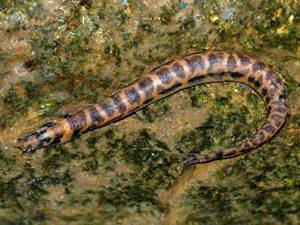
By the way, a loach, while on a hook, can remain alive and active for more than a day. As bait, loaches can be kept in stock for about a week, the main thing is to pour no more than 4-9 cm of water into the bucket where they are kept, and put fresh grass on top: nettle, wheatgrass, sedge. The water needs to be changed twice a day.
The loach fish (the photo gives you the opportunity to admire it) is considered of little value and is only eaten occasionally, because it is greatly neglected, which, however, it does not deserve. Its meat is tasty and tender and resembles tench: without small bones, fatty, sweet, juicy. True, it almost always smells like mud, and in connection with this, some fishermen are engaged in breeding loaches in special digging ponds.
We suggest you read: Angelfish, compatibility with other fish
Before cooking, it is advisable to rinse the fish thoroughly with running water, after clearing the mucus with ash. Most often, fish soup is made from loaches; They are fried very rarely, although in Japan and France this fish is specially grown and is considered a real delicacy. Cooked loach dishes are sources of many nutritional components:
- vitamin A, necessary to ensure the health of the mucous membranes and the process of producing sex hormones;
- vitamin B, which increases overall tone and strengthens the heart muscle;
- vitamin D, which ensures healthy and proper growth of the skeleton and teeth;
- vitamin B, which normalizes the functioning of the nervous system and the processes of carbohydrate and energy metabolism;
- magnesium, potassium, fluorine, zinc, calcium, iodine;
- unsaturated fatty acids and amino acids that favor the functioning of the cardiovascular system and normalize cholesterol levels.
Loach fish has another very useful quality: it eats large quantities of mosquito larvae, including malaria ones. In this ability, the fish is not inferior even to the gambusia, imported from America and acclimatized to local conditions specifically for this purpose.
The habitat of loaches is the inland waters of Europe (from France to the Urals), East and South Asia. By the way, Asian residents willingly eat them. In Russia, the loach is found in the basins of the Azov, Baltic and Caspian seas. The loach is found in greatest numbers in ditches, swamps and swampy rivers of Polesie, as well as in the Kuban. Near Moscow, this fish can also be found in many lakes and swampy ponds.
Where does this fish live?
The range extends to the rivers of Europe and Asia. More precisely, the fish lives in the rivers of the Black, Mediterranean, Baltic, Caspian and Aral seas, as well as Lake Baikal. In addition, it can be found in some reservoirs belonging to the Atlantic and Pacific oceans.
The loach's favorite habitat is quiet, swampy rivers, lakes, and artificial reservoirs. He loves places overgrown with aquatic vegetation, the bottom of which is covered with a layer of silt.
This fish is well adapted to live where others cannot live. Moreover, the loach is also able to survive temporary drying out of water bodies. It can lie for a long time in wet mud at the bottom of a dry pond.

This fish looks somewhat snake-like, which often causes hostility
In favorable conditions, the fish prefers to hide from the dangers of this world on the muddy bottom of the reservoir. However, in bad weather, the loach floats to the upper layers of the water column.
This fish has another interesting feature - it makes sounds. For this reason, bindweed is also called squeaky. The fact is that it is able to draw air into the food canal. When floating to the surface, it releases air through the anus, making a squeaking sound. This is a kind of analogue of non-branch breathing. This ability allows the fish to survive in low water conditions.
Common types of loaches
Let's get acquainted with the common types of fish described. For the convenience of users, the information is presented in table form.
Table. Overview of common loach fish species.
| Name, photo | Short description |
| Common loach (lat. Misgurnus fossilis) | A species widely distributed in fresh water bodies of Europe and Asia. Moreover, the fish prefer muddy reservoirs. Misgurnus fossilis is unpretentious to living conditions, and therefore can easily live where there are no other species. |
| Common (Siberian) spined loach (lat. Cobitis taenia) | The smallest representative of the loach family. Lives in reservoirs of almost all of Europe, with the exception of northern countries, as well as in some Asian countries. The body length can reach 10 cm. The color is light yellow, with large spots on the sides, merging into a stripe. |
| Amur loach (lat. Misgurnus anguillicaudatus) | Lives in Japan, China, Sakhalin. Can grow up to 25 cm in length. The body of the Amur loach can be yellowish-copper or light brown in color. |
